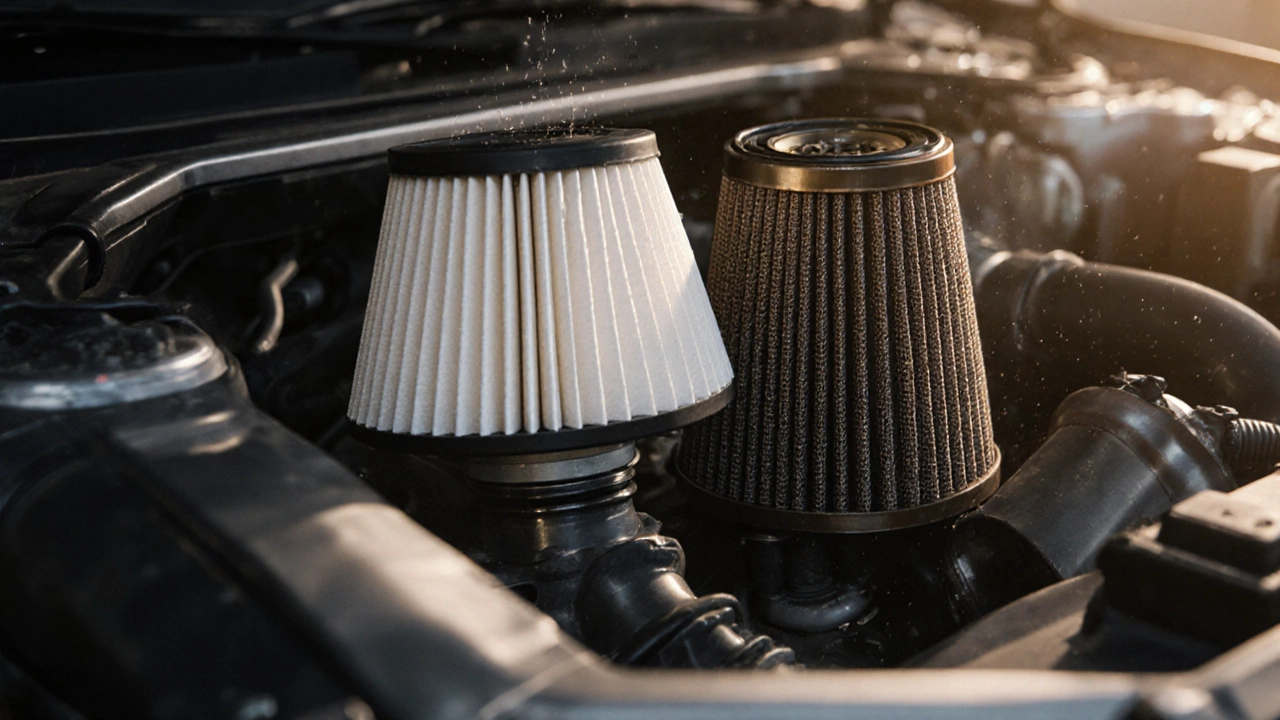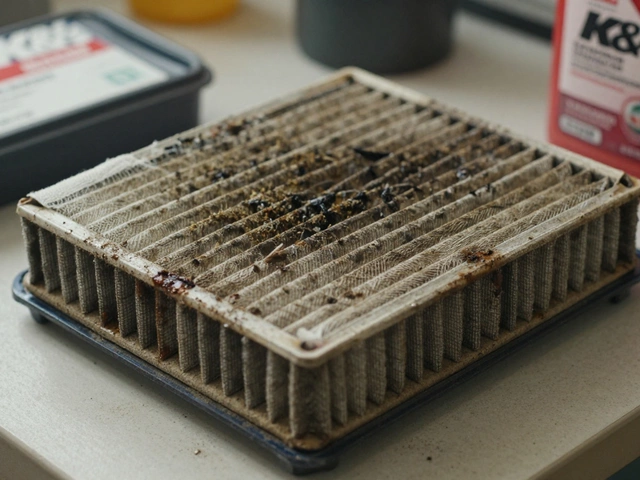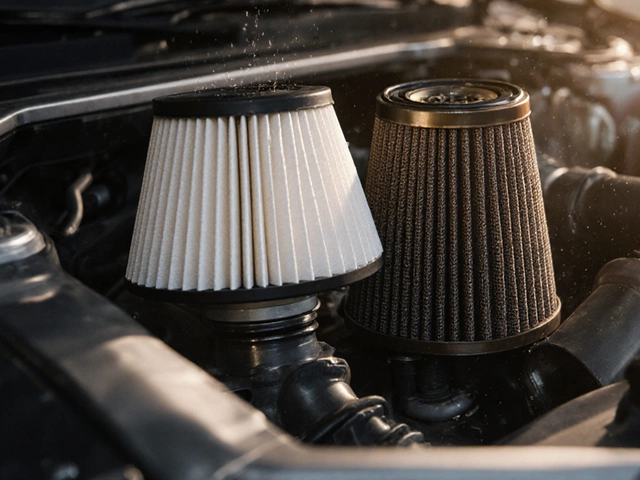Performance Air Filter Lifespan Calculator
Input Your Conditions
Results & Maintenance Guide
Estimated Filter Life
Tip: Clean regularly to maintain performance. If pressure drop remains high after cleaning, it's time to replace.
Key Takeaways
- Most reusable performance air filters last 30,000-80,000 km before a full replacement, depending on driving conditions.
- Regular cleaning (every 5,000-10,000 km) keeps airflow gains and protects the filter media.
- Extreme dusty environments can halve the useful life, while mild climates can extend it.
- When cleaning no longer restores low pressure drop, it’s time to replace the filter.
- Even though upfront cost is higher, a reusable filter can be cheaper over its service life than constantly buying OEM replacements.
When it comes to performance air filter is a high‑flow replacement filter designed to increase engine breathing while protecting against dust, understanding how long it actually lasts can save you money and keep power gains real. Below we break down the variables that influence lifespan, walk through a simple maintenance routine, and compare reusable units to standard OEM filters.
What Makes a Performance Air Filter Different?
A typical OEM air filter uses pleated paper to trap particles while restricting airflow. In contrast, a performance filter uses a filter media made of oiled cotton gauze, foam or synthetic fibers that can be cleaned and reused. The media is deliberately porous, allowing more air to pass into the engine burns fuel‑air mixture to produce power, which translates to a modest horsepower bump (typically 2-5%).
Factors That Influence Longevity
Unlike a paper filter that degrades predictably, a reusable unit’s life hinges on several real‑world factors:
- Driving environment: Off‑road, construction zones, or desert highways dump a lot of sand and grit. High dust load measures the concentration of airborne particles accelerates media clogging.
- Vehicle mileage: The more kilometers you log, the more cycles of intake and cleaning the filter endures.
- Maintenance frequency: Waiting too long between cleanings lets particles embed deeper, reducing effective lifespan.
- Brand and construction quality: Premium brands like K&N are known for robust cotton gauze and thorough pre‑oil coating often outlast generic foam filters.
- Climate: Humidity can cause dust to stick, while very cold air may reduce filter elasticity, affecting re‑oil performance.
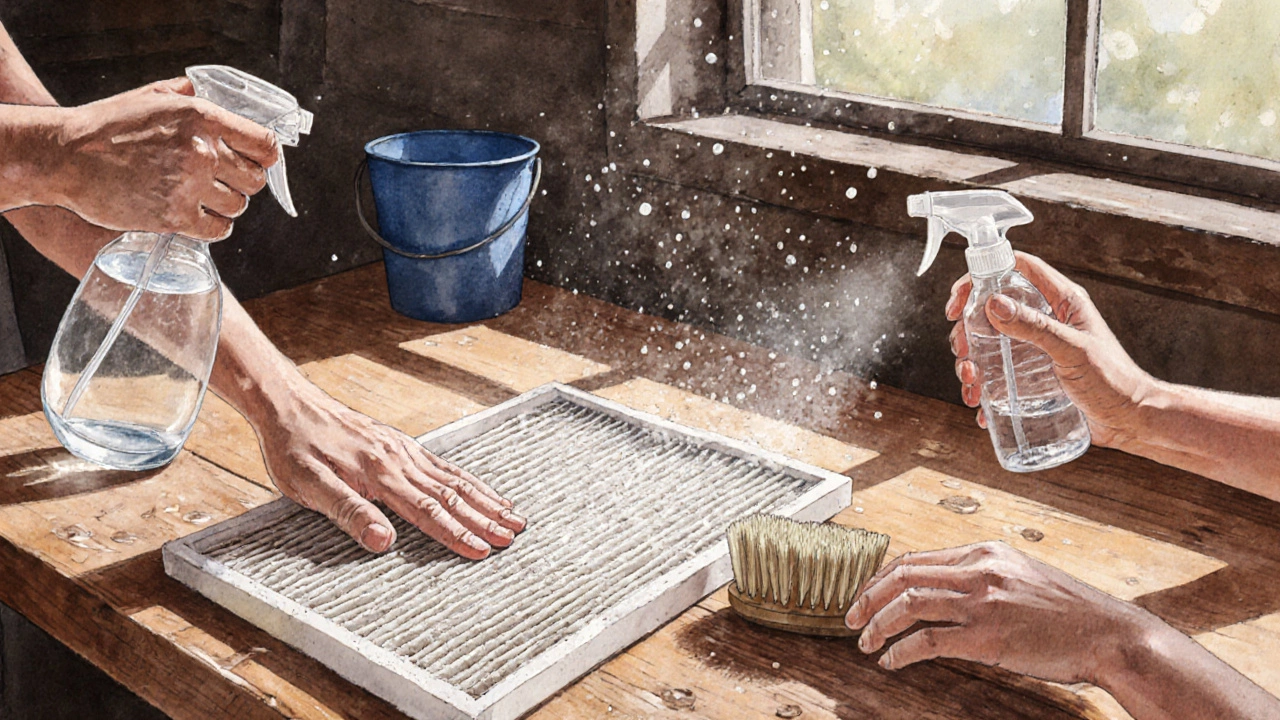
Typical Service Intervals
Most manufacturers recommend cleaning a reusable filter every 5,000-10,000 km (3,000-6,000 miles). This interval balances two goals:
- Maintain low pressure drop to preserve the advertised horsepower gain.
- Prevent hard‑baked dust that can’t be removed by a basic cleaning kit.
If you regularly drive in dusty conditions, cut the interval in half. Conversely, if most of your miles are on sealed highways with clean air, you might stretch it to 12,000 km.
When to Replace a Performance Filter
Even a well‑maintained filter will eventually reach the end of its usable life. Look for these telltale signs:
- Pressure drop reading (if you have a manifold gauge) stays high after multiple cleanings.
- The media shows permanent tears, holes, or significant fraying.
- Oil saturation is uneven, leaving dry spots that can let particles through.
- Engine performance drops noticeably despite a clean filter - a sign the media can no longer filter effectively.
At that point, replace the unit. Most high‑quality filters are rated for 30,000-80,000 km before a full replacement becomes necessary, though exact numbers vary by brand and usage.
Cost Comparison: Reusable vs OEM
| Attribute | Reusable Performance Filter | Standard OEM Filter |
|---|---|---|
| Initial cost (AUD) | $120-$180 | $20-$35 |
| Typical lifespan | 30,000-80,000 km (including cleanings) | 15,000-30,000 km (single‑use) |
| Maintenance required | Cleaning kit ($15-$25) every 5,000-10,000 km | None (replace only) |
| Airflow gain | +2-5% over OEM | Baseline |
| Overall cost per 60,000 km | ~$150 (one filter + 4 cleanings) | ~$150 (four OEM replacements) |
Even though the reusable filter’s price tag looks high, the math evens out after a few thousand kilometres because you only buy cleaning supplies instead of full‑size replacements. For drivers who value the slight power boost, the long‑term savings are a nice bonus.
Step‑by‑Step Cleaning Routine
Here’s a quick, repeatable process that works with most cotton‑gauze filters (K&N, BMF, etc.). Grab your filter cleaning kit includes cleaning solution, soft brush, and re‑oil spray and follow these steps:
- Remove the filter from the intake box. Note any clips or screws so you can reinstall correctly.
- Tap the filter gently to dislodge loose dust. A low‑pressure air blower can help, but avoid high‑pressure tools that push particles deeper.
- Apply the cleaning solution liberally on both sides. Let it soak for 2-3 minutes.
- Use the soft brush to work the solution through the media. Move in a circular motion; don’t scrub hard enough to tear the gauze.
- Rinse thoroughly with low‑pressure water until the runoff is clear. Shake off excess water.
- Lay the filter flat in a shaded area. Allow it to air‑dry completely - at least 30 minutes - never use a heater or direct sun.
- Once dry, spray the re‑oil evenly on both surfaces. The oil acts as a barrier that captures fine particles while still letting air flow.
- Re‑install the filter, ensuring it seats correctly and all seals are intact.
Follow the kit’s specific oil‑coverage recommendations; over‑application can attract more dust, while under‑application reduces protection.
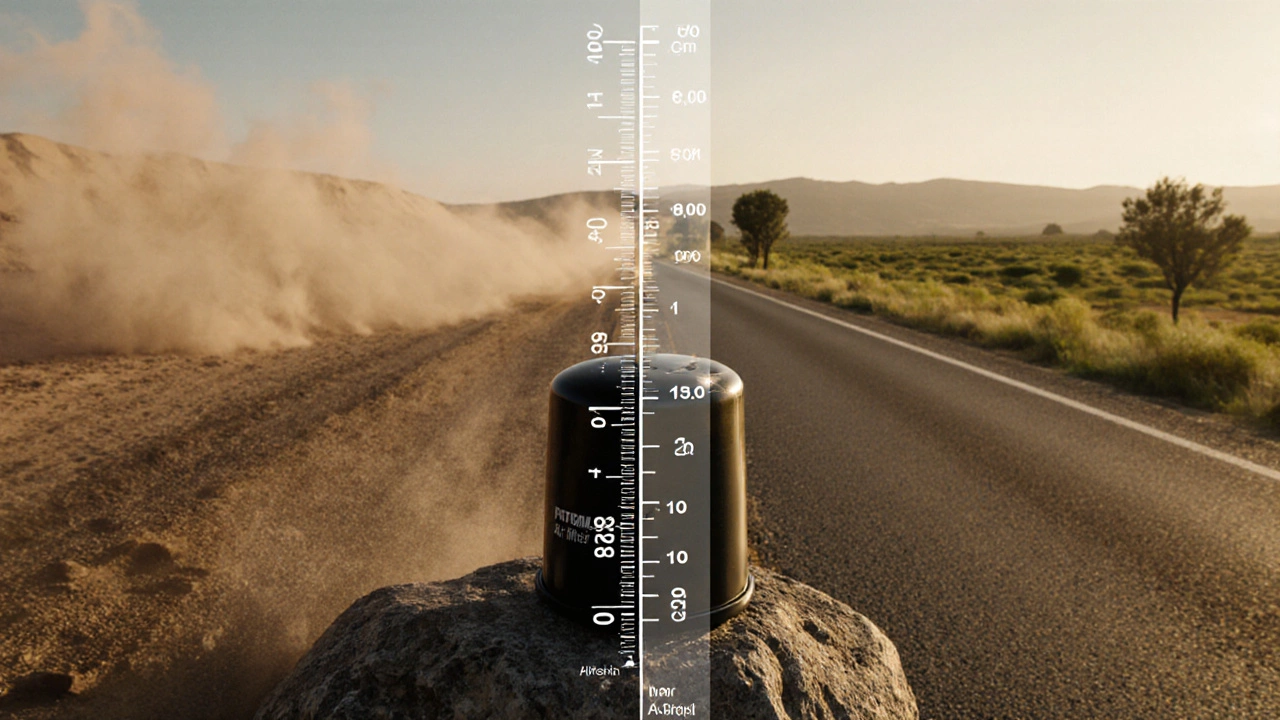
Choosing the Right Brand for Your Situation
Not all performance filters are created equal. Below is a quick guide to help you pick the best fit:
- K&N: The market leader with a proven 30,000‑km lifespan on average. Excellent for daily drivers who enjoy regular cleaning.
- BMF: Focuses on high‑flow foam media. Offers lighter weight and slightly higher airflow but may need replacement sooner in dusty climates.
- OEM‑compatible performance units: Some manufacturers sell branded high‑flow filters that fit directly into the original housing. They often come pre‑oiled and may be marketed as “lifetime” - read the fine print, as the warranty usually assumes ideal conditions.
For Melbourne owners, where dust levels are moderate and humidity is variable, a K&N cotton‑gauze filter strikes a good balance between durability and performance.
Common Myths About Performance Filters
Because the topic is popular, you’ll see a lot of misinformation. Let’s set the record straight:
- Myth: A performance filter never needs to be replaced.
Fact: The media degrades over time; after 30,000-80,000 km the structure weakens, and cleaning can’t restore original efficiency. - Myth: Cleaning once a year is enough.
Fact: In high‑dust areas, you’ll see a measurable loss of airflow after just a few thousand kilometres. - Myth: Oil‑free filters are better for performance.
Fact: Oil is the very thing that traps fine particles while keeping the media porous. Oil‑free designs usually sacrifice some filtration efficiency.
Bottom Line
If you’re after a modest horsepower bump and don’t mind a bit of routine upkeep, a reusable performance air filter can easily last between performance air filter lifespan of 30,000 and 80,000 km. Keep an eye on pressure drop, clean on schedule, and replace only when the media shows irreversible wear - that’s the sweet spot between cost, power, and reliability.
Frequently Asked Questions
How often should I clean my performance air filter?
For most drivers, clean every 5,000-10,000 km. If you frequently drive on dusty roads, aim for every 3,000-5,000 km.
Will cleaning the filter reduce its power gain?
When cleaned correctly and re‑oiled, the filter should return to its original airflow rating, so the horsepower boost stays intact.
Can I use a performance filter in a high‑performance turbo car?
Yes, most high‑flow filters are rated for turbocharged and supercharged engines, but verify the flow rating matches the increased demand.
What are the signs that my filter needs replacement?
Persistent high pressure drop after cleaning, visible tears or holes in the media, uneven oil distribution, or a noticeable drop in engine response.
Is a performance filter worth the extra cost?
If you value a 2-5% power increase, better throttle response, and are comfortable with a simple cleaning routine, the long‑term savings often outweigh the higher upfront price.

